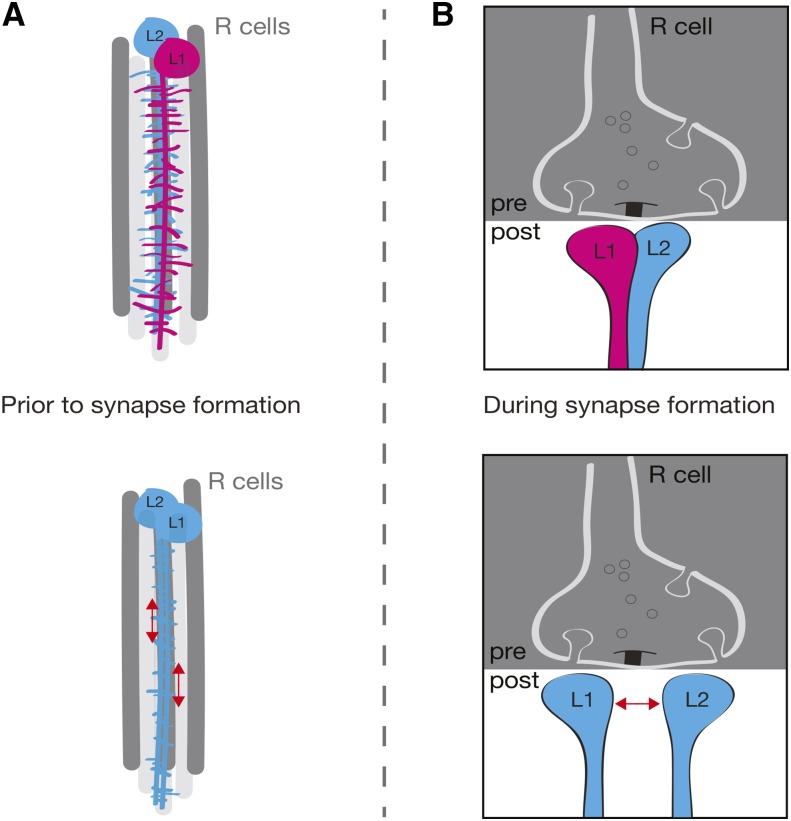Figure 5.
Model: cell-specific isoform expression is necessary for R cell synapse formation. (A) Side view of the developing cartridge. When L1 and L2 express different Dscam2 isoforms, dendrites from these cells elaborate extensive branches that meet to form synapses at the R cell terminal (top). In animals expressing a single isoform, L1 and L2 dendritogenesis is normal, but dendritic growth is stunted due to inappropriate repulsion between these cells. This results in a reduction of postsynaptic dendrites prior to synapse formation (bottom). (B) Cross-sectional view of the developing synapse. When L1 and L2 express different Dscam2 isoforms, nascent synapses incorporate one dendritic element from each of these cells. Multiple elements from the same cells are excluded through Dscam1/Dscam2 self-avoidance (Millard et al. 2010) (top). In animals expressing a single isoform, nascent synapses that incorporate L1 and L2 elements are subject to inappropriate repulsion at the forming synapse. This could lead to several scenarios including: normal synapses (presumably due to compensatory mechanisms that overcome inappropriate repulsion), synapses that lack an L1 or an L2 element, and synapses that lack both L1 and L2 (bottom). Red arrows indicate inappropriate repulsion between L1 and L2. Dscam2A = blue, Dscam2B = pink.

